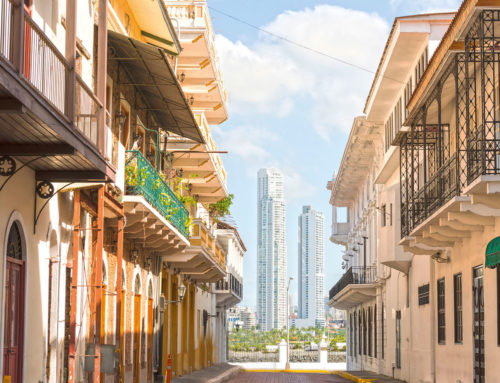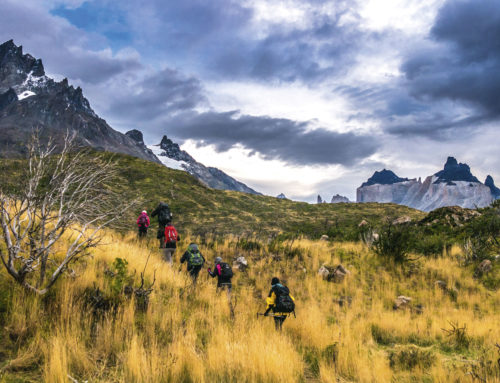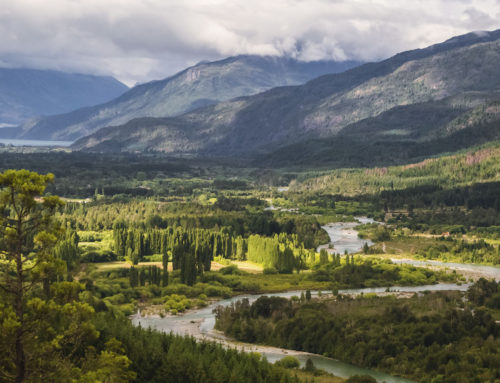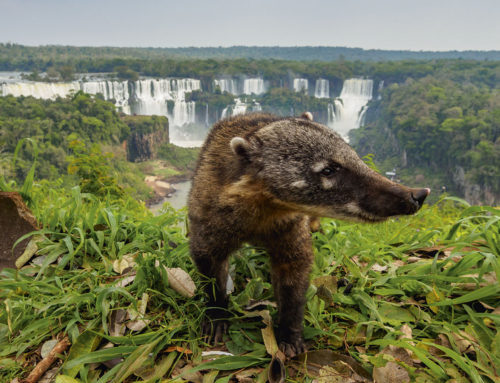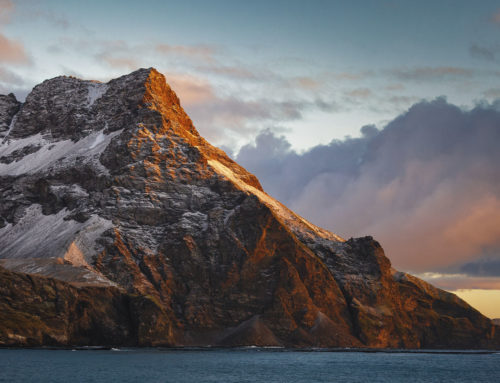From endangered endemic species to deforestation of the world’s largest rainforest, Latin America is at the forefront of the global struggle to forge a sustainable approach to tourism development. With the United Nations World Tourism Organisation (UNWTO) forecasting a rise in international travellers to the region from 674 million in 2000 to 1.8 billion by 2030, never has the need to develop a sustainable approach to regional tourism growth been more pressing.
Cooperation is key
As secretary-general Taleb Rifai noted when he launched UNWTO’s sustainable tourism awareness raising campaign ‘Travel.Enjoy.Respect’ last year, a major factor behind the success of any major sustainable project is to adopt a joined-up approach from the outset, engaging everyone from national and local governments to private-sector companies, local communities and tourists. One good example of this approach is the Mesoamerican Biological Corridor (MBC ) project, which began in the 1990s.
The MBC has seen the governments of the eight Central American countries — Mexico, Costa Rica, Nicaragua, El Salvador, Guatemala, Honduras, Belize, and Panama — unite in a common sustainable goal: the creation of a free-movement corridor for wildlife across the region. This area was then broken down into four parts, from multiple-use zones to core zones, where animals take priority over humans. All eight countries are also members of the Central American System of Protected Areas (SICAP).
Meanwhile, frameworks such as the UN’s REDD+ aim to increase projects’ chances of success by engaging local communities. Examples of local REDD+ programmes, which aim to reduce emissions from deforestation and forest degradation, include a major project in the Alto Mayo of northern Peru being overseen by Conservation International. This project intends to conserve a protected area of 182,000 hectares which, despite its status, has suffered mass deforestation. The organisation engages local communities and rewards them for helping to protect the forested area to stem the decline, by providing funding, supplies and training.
Peru is particularly close to the heart of LATA treasurer Quinn Meyer, founder and director of the Peruvian-based Crees Foundation, a not-for-profit organisation dedicated to supporting a sustainable Amazon. LATA chairman Colin Stewart also praised the country’s efforts to combat deforestation. Last year saw Peru’s Ministry of Culture take positive steps to combat overtourism at its most popular site, Machu Picchu, by introducing a more restrictive entrance policy.
Another key battleground is Brazil. Here, major initiatives such as the Amazonia Sustainable Landscapes Project support the government’s commitment to reaching its Paris Agreement target of reforesting 12 million hectares of land by 2030.
LATA is also playing its part in giving back to local communities touched by tourism. Last year its charity, the LATA Foundation, donated £50,000 to 13 social and environmental initiatives in the region, such as The Condor Trust, which helps low-income Ecuadorians access secondary and higher education. Currently LATA is developing its new LATA Sustainability Charter, which it will ask its members to work towards.
Pura Vida
One of the best examples of what a committed government can achieve over time when it engages a wide variety of stakeholders is Costa Rica. From fostering renewable energy to reversing its earlier pattern of deforestation Costa Rica, home to five percent of the world’s known biodiversity, has fought on many fronts. An early milestone was the creation of the pioneering Certification for Sustainable Tourism (CST) scheme back in 1997, which categorises companies based on their adherence to sustainable practices. The scheme’s supporters include the UNWTO, while Costa Rica in turn is committed to achieving core UN goals as partners in the 2030 Agenda for Sustainable Development.
As Rob Wilson, UK Representative of the Costa Rica Tourism Board (ICT), explains, sustainability and conservation lie at the heart of its CST scheme and ‘pura vida’ brand of tourism. “Costa Rica is a global leader in environmental protection,” said Wilson. “More than a quarter of the country is protected and classed as national parks, wildlife areas and biological reserves, ensuring that this remains a real haven for wildlife.” Current focuses include working towards becoming the first carbon-neutral country in the world by 2021.
Costa Rica’s neighbour, Nicaragua, is another country making strides. Currently the eighth fastest-growing tourism destination in the world it’s underpinning this growth with a strong focus on sustainability, efforts which helped it scoop the 2017 LATA award for Sustainable and Responsible Tourism.
Stewart calls Nicaragua “an excellent example” of a country and a tourism board (INTUR) committed to working towards an environmentally and socially sustainable economy. He points to the creation of its National Tourism Commission (NTC), which has an emphasis on empowering local native communities, helping to ensure they benefit from tourism growth and are fully part of the decision-making process, as a major step. INTUR has also developed a strong track record in promoting ecotourism, supporting local artisans and promoting sustainably produced Nicaraguan products such as coffee.
Other milestones include the development of a model that enables the state and community to co-manage the enormous Bosawás Biosphere Reserve, part of the MBC corridor, and the passing of the titling law for Nicaraguan indigenous territories, which the Nature Conservancy cites as the first of its kind in Central America. The country is also making strides towards its goal of sourcing 90% of its energy from renewable sources by 2020 and currently has four Rainforest Alliance Certified Tour Operators, all of whom are members of the TOPS (Tour Operators Promoting Sustainability) programme, which begun in 2012.
Plastic
Over in the Galápagos, where the formal designation of the Galápagos Marine Reserve (GMR) in 1998 created a protected area covering 51,000 sq miles, Stewart notes how the Galapagos National Park Directorate (GNPD) and the Ecuadorian Ministry of Tourism strictly govern tourism companies which operate there to ensure their businesses are as environmentally friendly as possible. Right now, though, one of the key foes is plastic.
According to UK-based charity Galápagos Conservation Trust, which has set up a Marine Plastics Appeal, eight million tons of plastic enters the world’s oceans a year, contributing to the death of 1.5 million marine animals annually and placing delicate ecosystems such as the Galápagos under threat.
Aside from plastic gathering, the GCT conducts research and educational programmes among local communities and schools. It’s also working with local partners to restore the flora and fauna of Floreana Island, reintroducing locally extinct species and eradicating invasive species such as rats. If successful, the GCT says “this will be the first large, inhabited island in the world to have its habitat completely restored, and will act as a template for other conservation projects globally”.
Best practice
LATA members leading by example include Chimu Adventures, whose ‘Pass it On’ programme has helped fund hundreds of local community projects. Since 2006 Chimu has also worked with Kiva, a local NGO, offering loans to local businesses.
New properties raising the bar include actor Leonardo DiCaprio’s luxury ecotourism project, Blackadore Caye, a Restorative Island in Belize, opening late this year. Aside from being built to the highest sustainable standards, the project aims to reverse the recent environmental decline of the Caye itself.
Others leading by example include the Sol y Luna hotel in Peru’s Sacred Valley, whose recent projects include helping found a local school. Sol y Luna Intercultural School has 220 students, with a specially designed area for its 15 disabled students. Meanwhile, in Chile, Tierra Atacama has become the first 100% solar-powered hotel in South America. It also removed all plastic bottles after installing a NASA-designed water system, which supplies both still and sparkling water. Awasi Patagonia is transforming a former sheep farming estancia into South America’s first Puma Foundation.
Future thinking
While Stewart stressed that “amongst LATA members sustainability is already very high up the agenda” it’s clear that more action will be needed to move the sustainability struggle on further and ensure tourism delivers social and economic benefits to local communities while preserving the region’s precious environment and cultural and natural heritage. Popular misconceptions must also be challenged and debunked, such as the idea that sustainable tourism offerings are by nature prohibitively more expensive.
“In terms of implementing change, one key focus is on education,” says Stewart. “We would encourage support from agents to help promote more sustainable behaviour, both amongst tourists and the travel industry, and we would also encourage travel agents to question their operator’s sustainability credentials.”
As demand for sustainable tourism continues to increase, not least among high-end travellers and experience-craving millennials, hopefully more operators and local organisations will stop believing they can’t afford to invest in putting sustainability at the core of their business — rather, they can’t afford not to.


